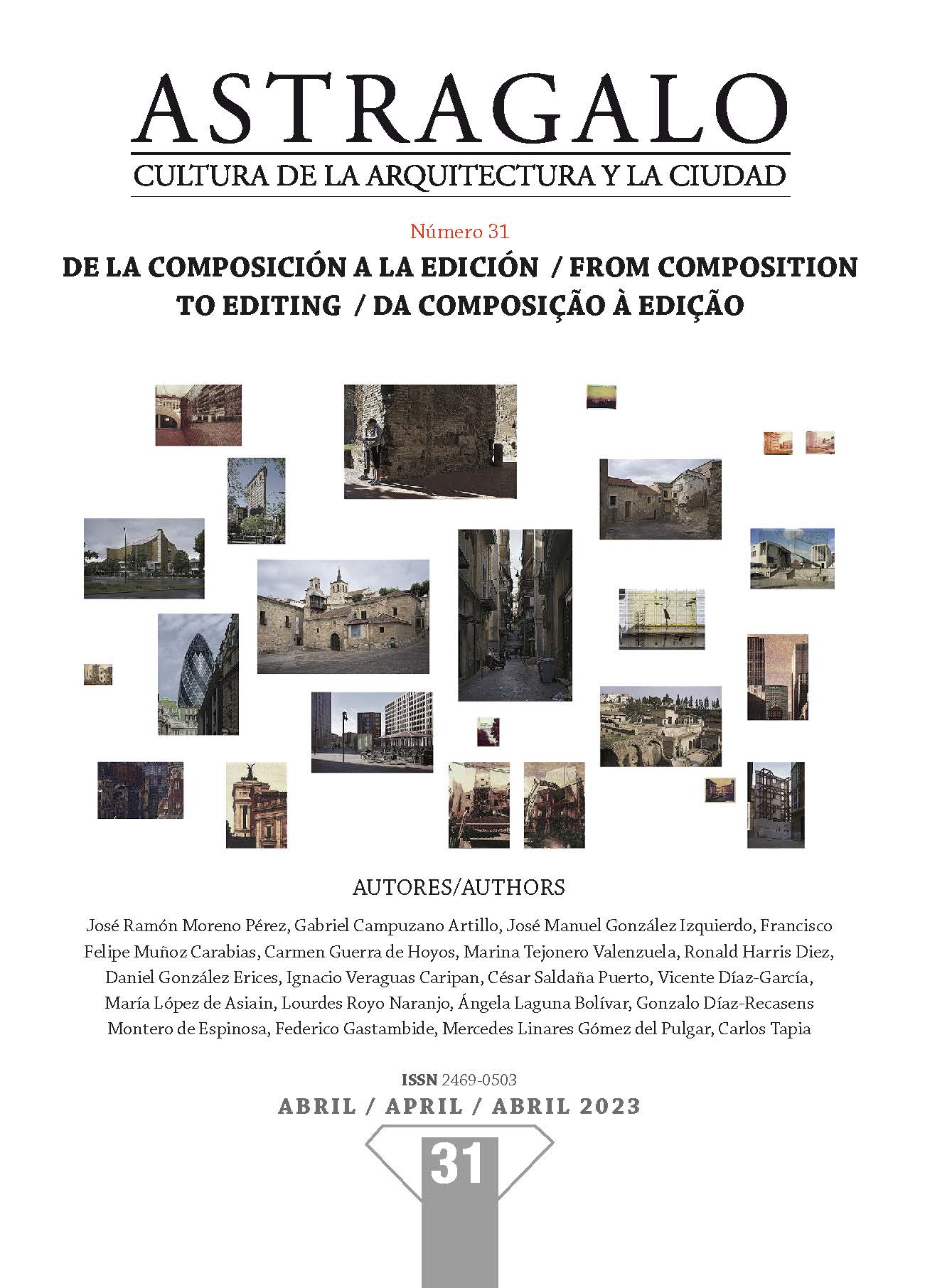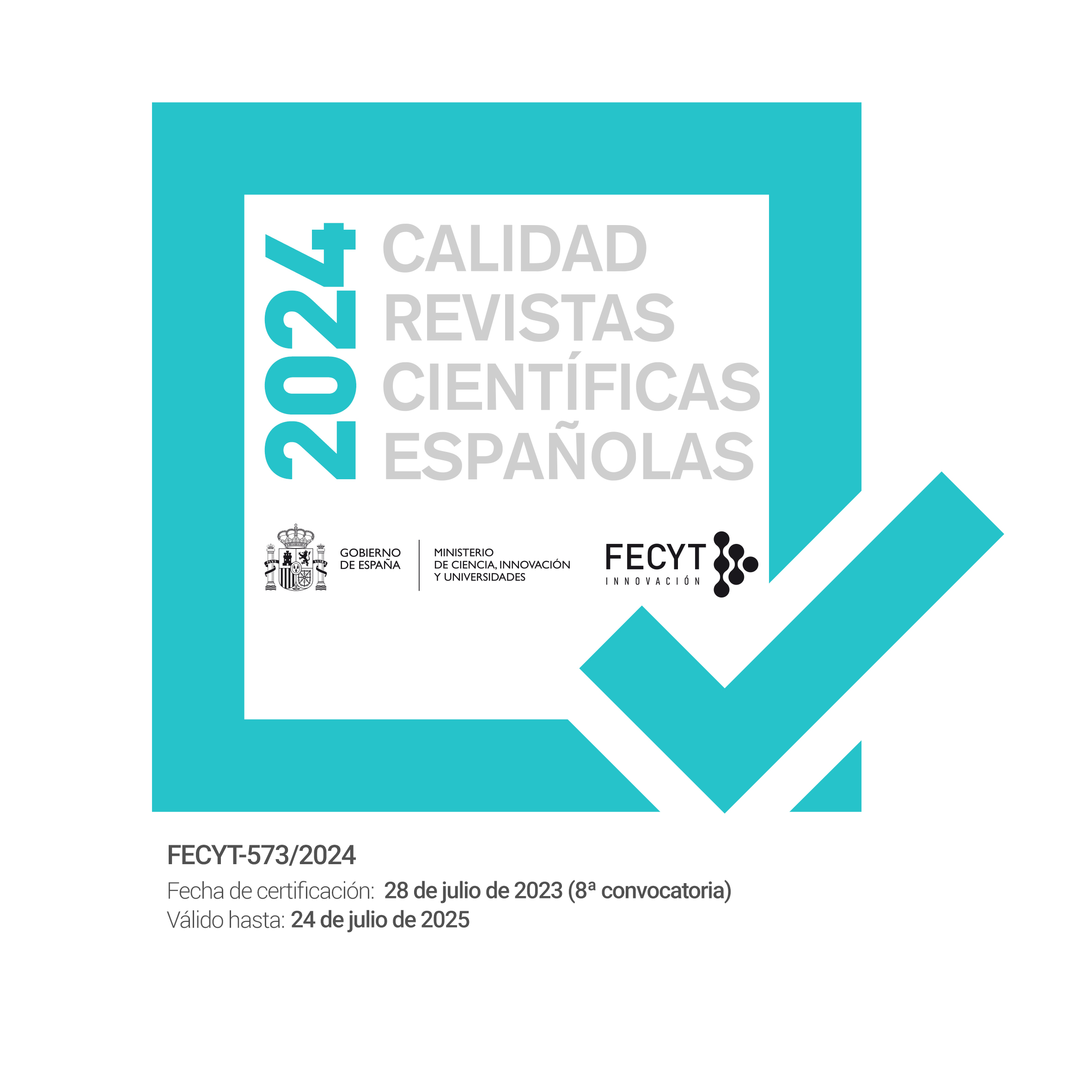#architecture: cyberspace and decomposition aesthetics in virtual self-editing.
DOI:
https://doi.org/10.12795/astragalo.2023.i31.04Keywords:
self editing, social networks, decomposition, cyberspace, virtual architecture.Abstract
The proliferation of social networks has led to a radical change in the forms and modes of communication in the arts and architecture in particular. The virtual self-publishing of images proposed by many of these platforms represents a rethinking of contemporary aesthetic experimentation where the limits between author and viewer are diluted in an exponential amalgamation of recombined and retouched information whose only possible pattern is the domain of the expressive, the sentimental. against the representative, dictated from the digital swarm that leads to the dictatorship of the like as a validating argument. From this perspective, the affectation of the project as a conceptual future is flattened in an insubstantial and horizontal decomposition of images that destroys any plausible organization. The generating idea is transferred from the whole to the parts, now converted into an indifferent collage of visual sensations as the only configuring structure of the work. In a surely unconscious way, it is inferred in the virtual space, an area of the (im)possible whose rules are, in the words of Roy Ascott, "re-thinking the possibilities of the architecture of new worlds" (Ascott, R: 1994 ). A cyber-architecture that renounces being a clone of the real and that paradoxically has many qualities of the empty space simulated by modern architecture: weightless, limitless, immaterial and unfinished.
Downloads
References
Álvarez, Paula V. 2018. “La edición en arquitectura: cultura de la edición vs. cultura del libro”. SOBRE. 4, 81-96.
Arias Maldonado, Manuel 2016. La democracia sentimental. Política y emociones en el siglo XXI, Barcelona: Página Indómita.
Ascott R. “The Architecture of cyberception”, en http//:observacionesfilosoficas.net/virilo.htm (1 de junio de 1994). Disponible en https://revistaiman.es/cibercepcion-e-hiperliteratura/.
Bauman, Z. (2013): La modernidad líquida, Buenos Aires, Editorial FCE.
Baudrillard, J. (1981) De la seducción. Madrid: Cátedra.
Baudrillard, J. (1997) La ilusión y la desilusión estéticas.Caracas: Monte Ávila.
Belting, Hans. 2007. Antropología de la imagen. Buenos Aires: Katz Editores.
Bonta, Juan P. 1975. Anatomía de la interpretación en arquitectura. Reseña semiótica de la crítica del Pabellón de Barcelona de Mies van der Rohe. Barcelona: Gustavo Gili.
Campa, R. 1995. La metarrealidad. Buenos Aires: Editorial Biblos.
Carpo, M. 2003. La arquitectura en la era de la imprenta. Madrid: Catedra, 2003.
Carpo, M. 2017. The second digital turn: design beyond intelligence. Cambridge: The MIT Press.
Carpo, M. 2020. “Ascenso y caída de los paradigmas visuales: Una entrevista con Mario Carpo.” Realizada por Stephannie Fell Contreras en
The Bartlett School of Architecture (10 de marzo, 2020) y a través de Zoom (14 de abril, 2020). Publicada en la Revista Materia Arquitectura nº 20. Diciembre 2020. p 6-23.
Castells, Manuel. 2005. La era de la información (vol. 1): economía, sociedad y cultura. La sociedad Red. Barcelona: Alianza Editorial.
Cervera Sarda, M. 2018. Espacio y Tiempo en la Composición Arquitectónica. Madrid: Editorial Munilla-Lería.
Chul-Han, Byung. 2014. En el enjambre. Barcelona: Herder.
Cuccorese, M. 2007. Jean Baudrillard y la seducción. Madrid: Campo de Ideas.
Dodds, G. 2005. Body in Pieces: Desiring the Barcelona Pavilion. London: Routledge.
Dumont, L. 1987. Ensayos sobre el individualismo. Madrid: Alianza.
Español, J. 2001. El orden frágil de la arquitectura: 9 (Arquíthesis). Madrid: Fundación Arquia.
Hauser, Arnold. 1975. Historia social de la literatura y el arte. vol.1. Barcelona: Guadarrama
Kuhn, Thomas S. 1988. La estructura de las revoluciones científicas. Buenos Aires: Fondo de Cultura Económica.
Leach, Neil. La an-estética de la arquitectura. Barcelona: Gustavo Gili.
Lipovetsky, G. (2001). “La postmodernidad a debate” Revista De Pensament I Anàlisi, (1), Castellón: Universidad Jaume I. 15-17.
Recuperado a partir de https://www.e-revistes.uji.es/index.php/recerca/article/view/281.
Lipovetsky, G. 2000. La era del vacío. Barcelona: Anagrama.
Mantzou, Polyxeni y Bitsikas, Xenofon. “Proyectar en la era del código digital”. Actas Congreso Internacional EGA XII. Madrid. 2008.
Marcos Alba, Carlos L. 2009 “Espacio Material: la arquitectura como extensión topológica”. Tesis doctoral. ETSAM.
Minguet Medina, Jorge. 2017 (Aspectos de) la arquitectura después de Bretton Woods. Sevilla: Universidad de Sevilla.
De Molina, S. 2017. Hambre de arquitectura. Necesidad y práctica de lo cotidiano. Madrid: Ediciones asimétricas.
Muñoz Carabias, Francisco F. 2022. La paradoja de Mies. Las (in)visibles simetrías continuas del espacio moderno (a través del Pabellón de Barcelona). Buenos Aires: Diseño Editorial.
Navarro Baldeweg, J. 2001. La Habitación vacante. 1ª ed. 1999. Valencia: PRE-TEXTOS.
Park, JH. 2003. “Preston Scott Cohen—Contested Symmetries and Other Predicaments in Architecture”. Nexus Netw J 5, 157–160 (2003). https://doi.org/10.1007/s00004-002-0010-8
Perliani, Erica, “El juego de la seducción (en torno a Baudrillard)” Universidad de Buenos Aires. Disponible en https://www.lacavernadeplaton.com/articulosbis/seduccion1314.htm#_ftnref40.
Pino, Cristina 2021 ““Quiero una foto aquí”, Instagram y el diseño arquitectónico” Arquitectura y empresa. Disponible en https://arquitecturayempresa.es/noticia/quiero-una-foto-aqui-instagram-y-el-diseno-arquitectonico
Rattenbury, K. (Editor) 2002. This is Not Architecture: Media Constructions. London: Routledge.
Rodríguez del Amo, Arturo. “La Arquitectura de Instagram”. COSAS de ARQUITECTOS. REVISTA DIGITAL DE ARQUITECTURA ON LINE
Disponible https://www.cosasdearquitectos.com/2020/05/la-arquitectura-de-instagram/
Spencer, D. 2016. The architecture of neoliberalism: how contemporary architecture became an instrument of control and compliance. London: Bloomsbury.
Villacañas, José Luis. 2015. Populismo, Madrid: La Huerta Grande.
Valery, Paul. 1928. Piezas sobre arte. Madrid: Visor, ed. 1999.
Tarrés Freixenet, Juan. 2010. “Los espacios abstractos”. Universidad Complutense. Madrid. chrome-http://www.mat.ucm.es/cosasmdg/cdsmdg/ideas/documentos/tarres.pdf
Gómez Echeverri, Fernando. 2022. “Entrevista a Ai Weiwei”. ETHICS 19. Disponible en «Internet ha cambiado drásticamente cómo se comporta y piensa la gente» https://ethic.es/2022/02/internet-ha-cambiado-drasticamente-como-se-comporta-y-piensa-la-gente-ai-weiwei/
Downloads
Published
How to Cite
Issue
Section
License
Copyright (c) 2023 Francisco Felipe Muñoz Carabias

This work is licensed under a Creative Commons Attribution-NonCommercial-ShareAlike 4.0 International License.


















